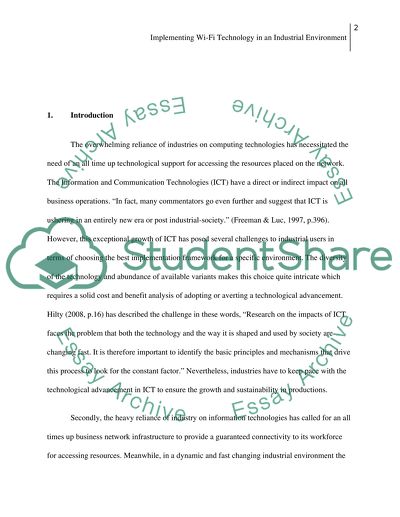Cite this document
(“Implementing Wi-Fi Technology in an Industrial Environment: Cost Research Paper”, n.d.)
Implementing Wi-Fi Technology in an Industrial Environment: Cost Research Paper. Retrieved from https://studentshare.org/information-technology/1581308-implementing-wi-fi-technology-in-an-industrial-environment-cost-benefit-analysis
Implementing Wi-Fi Technology in an Industrial Environment: Cost Research Paper. Retrieved from https://studentshare.org/information-technology/1581308-implementing-wi-fi-technology-in-an-industrial-environment-cost-benefit-analysis
(Implementing Wi-Fi Technology in an Industrial Environment: Cost Research Paper)
Implementing Wi-Fi Technology in an Industrial Environment: Cost Research Paper. https://studentshare.org/information-technology/1581308-implementing-wi-fi-technology-in-an-industrial-environment-cost-benefit-analysis.
Implementing Wi-Fi Technology in an Industrial Environment: Cost Research Paper. https://studentshare.org/information-technology/1581308-implementing-wi-fi-technology-in-an-industrial-environment-cost-benefit-analysis.
“Implementing Wi-Fi Technology in an Industrial Environment: Cost Research Paper”, n.d. https://studentshare.org/information-technology/1581308-implementing-wi-fi-technology-in-an-industrial-environment-cost-benefit-analysis.


